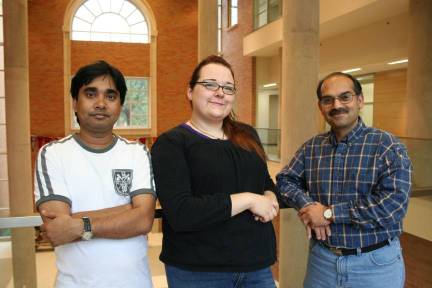UNT-HHMI URP Participants
URP Participants beginning Spring 2013
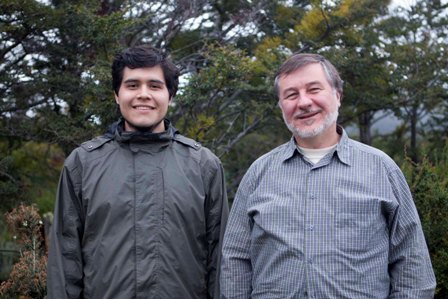
Irán Román in Chile with his research mentor, Dr. Jaime Jimenez. Irán is an international student from Mexico interested in genetics, conservation, and ecology. At UNT, he works with Dr. Jaime Jiménez, who is an ecologist specialized in the Sub-Antarctic ecosystems of Patagonia. Through the UNT Sub-Antarctic Biocultural Conservation Program, in 2013 Irán studied the ethology of the largest woodpecker in the Americas: the Magellanic Woodpecker (Campephilus magellanicus). Irán is also studying the evolutionary aspects that relate and differentiate genetically, behaviorally, and ecologically the different campephilus species in the americas. (Photo by Daniel Casado)
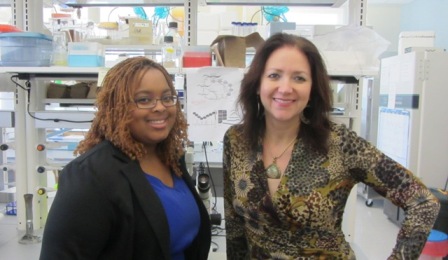
Laila Small with her mentor, Dr. Pam Padilla. The focus of the Padilla lab is to understand how organisms respond to and survive environmental stress. Laila and her peers are interested in identifying the molecular mechanisms involved with hypometabolic states. Specifically, they study anoxia-induced suspended animation in Caenorhabditis elegans. Dr. Padilla's lab takes a genetic and cellular approach for studying these phenomena.
URP Participants beginning Fall 2012

David de la Cerda (center) with his research mentors Susan Hammerly and Dr. Jeff Johnson. David's research involved genotyping the critically endangered Attwater's Prairie-chicken to suggest mating pairs for the current breeding season. The current project will involve testing immune function of these birds and seeing how immune response may impact the survival of the population.
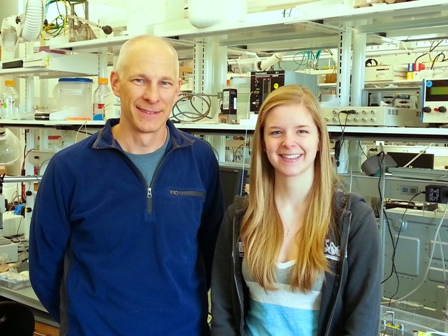
Allison Duquaine with her mentor, Dr. Ed Dzialowski.

Mark Lueke with his research mentor Dr. Pam Padilla. Mark is currently working on a project that involves mutated strains of C. elegans under low oxygen conditions (hypoxia). His research team first mutagenized nematode populations with EMS solution and began a forward genetic screen to isolate a desired phenotype in the population under specific conditions. The lab group is attempting to find a novel allele associated with nematode survival in hypoxic conditions that may work in conjunction with previously explored pathways (such as the daf hypoxia pathway). Overall their research is valuable because if the group finds a new genetic sequence involved in an organism's hypoxic response, they could potentially apply the findings to other experiments involved with hypoxic tumor research in human cancer patients.
Manabu Manandar is working with Dr. Robert Benjamin.
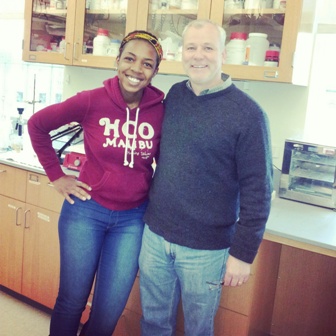
Shola Oni with her research mentor, Dr. Kent Chapman.

Sarah Ream with her research mentor, Dr. Ed Dzialowski. Sarah studies the development of endothermy in the Pekin duck. She is more specifically interested in seeing what happens when the bird goes from an endotherm to and ectotherm. She is studying bird development to help gain insight into evolutionary processes and human metabolic disorders.
Amy Slater is working with Dr. Lee Hughes.
Eric Willis is working in Dr. Warren Burggren's lab. Eric and his mentors are using brine shrimp, Artemia, as their animal model to try and further explain developmental windows. Their process starts by setting up 25 containers each containing a salinity of 10, 20, 30, 40, or 50 with 20 as their control. The brine shrimp life cycle is approximately 15 days, so for days 0-6 they have the shrimp in 1 gallon tanks to reduce the mortality rate. From days 7-9, 10-12, 13-15, and 16-18 they transport the shrimp into smaller 200mL containers so they can monitor them better. They then measure their appendages and body length to determine when their critical window is and attempt to manipulate it further.
URP Participants beginning Summer 2012
Trey Alley is working with Dr. Robert Benjamin.
Carrie Anderson is working in Dr. Michael Allen's microbiology research lab.
Aaron Harkleroad is working with Dr. Amanda Wright.
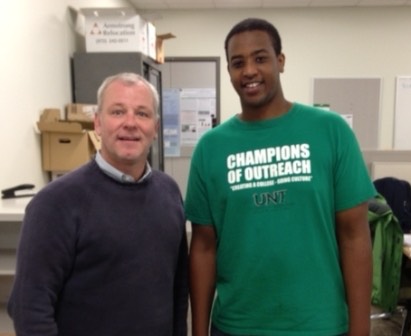
Kevin Mutore with his research mentor, Dr. Kent Chapman.
Lincoln Rehm is working with Dr. Ione Hunt von Herbing.
URP Participants beginning Fall 2011
Bryan Chempanal worked with Dr. Mark Burleson.
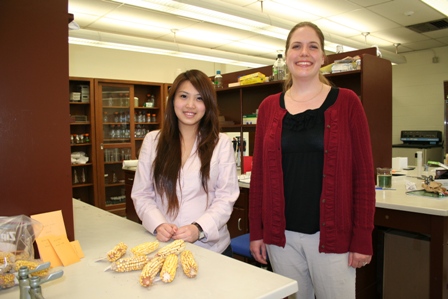
Wei Chen with her research mentor, Dr. Amanda Wright.

Ethan Geiger with his research mentor, Dr. Lee Hughes.
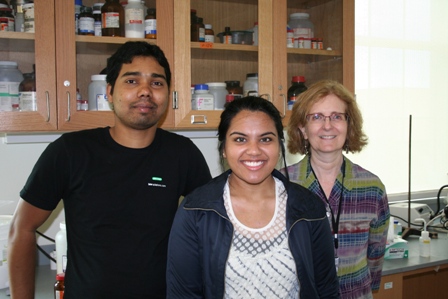
Marilyn Jalal (center) with her research mentors, Mohammad Salehin and Dr. Rebecca Dickstein. Marilyn worked on gene encoding with a nitrate transporter.

Daniel Munro with his research mentor, Dr. Qunfeng Dong.
Ona Nwokoye worked with Dr. Robert Benjamin.
Angela Piccola worked with Dr. Ione Hunt von Herbing.
Ashley Ross worked with Dr. Robert Benjamin.

Amy Shade with her research mentor, Dr. Lee Hughes.
Lisa Vaughn worked in Dr. Michael Allen's microbiology research lab.
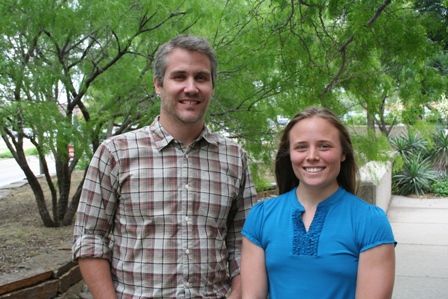
Jana Wold with her research mentor, Dr. Jeff Johnson.
URP Participants beginning Summer 2011
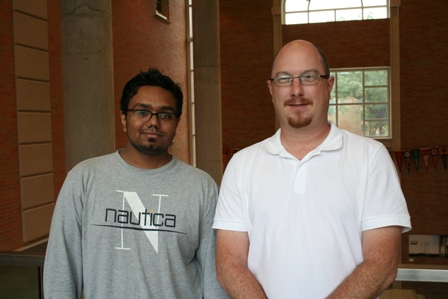
Harsh Desai with his research mentor, Dr. Michael Allen.
Malik Khan worked on neuroscience research with Dr. Guenter Gross.
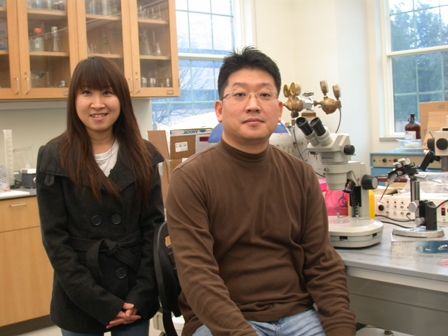
Ngoc Loan Pham worked with research mentors Seongcheol Kim and Dr. Pudur Jagadeeswaran (not pictured).
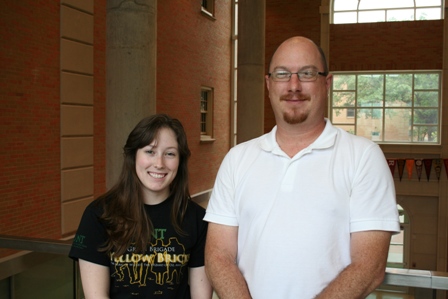
Alanna Staton with her research mentor, Dr. Michael Allen.
URP Participants beginning Spring 2011
Jennifer Archer with her research mentors, Dr. Jyoti Shah and Dr. Hossain Mondal. Jennifer's research focused on genetics of plant defense mechanisms. This included investigation of housekeeping genes, protein synthesis, and associated expression levels in Arabidopsis Thaliana through the manipulation and method development surrounding genetic screening, specific primer design, and novel use of transforming plasminds.

Adrian Cadar with his research mentor, Dr. Ed Dzialowski. Under the direction of Dr. Ed Dzialowski, Adrian has been investigating the mechanisms that mediate the closure of an important fetal blood vessel in the chicken embryo model. That model may lead to a better understanding of the congenital heard defect in humans.
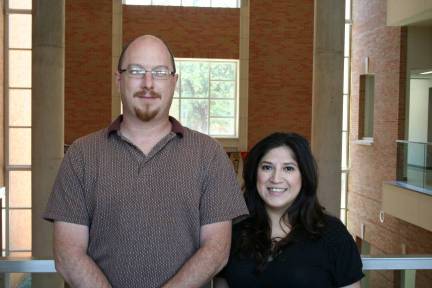
Melissa Torres with her research mentor Dr. Michael Allen. Melissa's research focused on environmental microbiology and biotechnology and was guided by graduate student, Sarah Martinez. They investigated global gene regulation by extracytoplasmic function sigma factors in Alphaproteobactera such as Rhodopseudomonas palustris (RPAL).
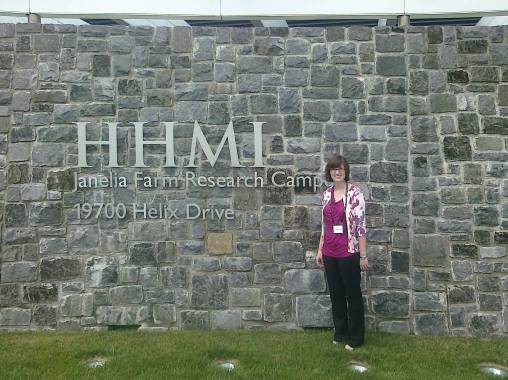
Coreen Manley with her research mentor, Dr. Lee Hughes. Coreen's research focuses on isolating a phage that infects Streptomyces as well as comparing the similarities and differences among the tRNA in Cluster C Mycobacteriophages.

Raven Pena with her research mentor Dr. Ed Dzialowski. Raven investigates the role of Na/K and SERCA pumps in the development of the endothermy in domesticated chicken. The activity of these two ATPases is associated with thermogenesis, because each pump releases residual amounts of energy as heat and an increase in ATPase activity should correlate with the attainment of endothermy.
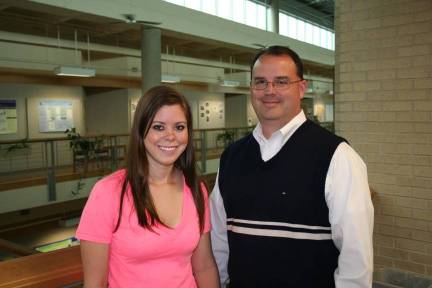
Shelby Needham with her research mentor Dr. Duane Huggett. Shelby's research investigates the physiological effects on beta-3 receptors using trout as her model system. Until recently, it was thought that humans only had beta-1 and beta-2 adrenoreceptors. Using BRL (agonist) and SR (antagonist), Shelby hopes to find the function of the beta-3 adrenoreceptor, which may correlate to humans.
